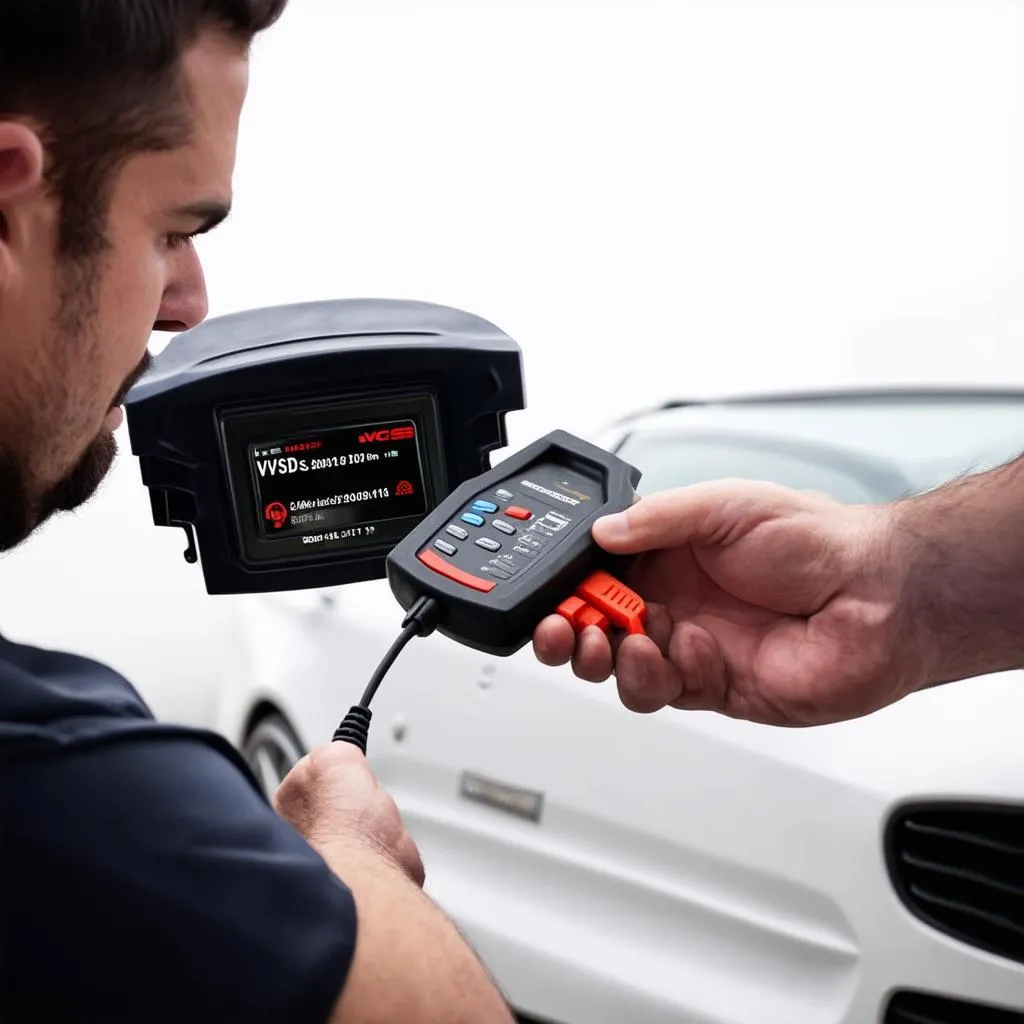The VCDS (Vag-Com Diagnostic System) is an invaluable tool for diagnosing and addressing parking brake issues in Volkswagen, Audi, Seat, and Skoda vehicles. Understanding how to use VCDS for parking brake related functions can save you time and money, whether you’re a professional technician or a DIY enthusiast. This article will guide you through the common uses of VCDS for electronic parking brakes, covering diagnostics, release procedures, and service mode activation.
Understanding the intricacies of the electronic parking brake system is crucial for effective troubleshooting. Unlike traditional handbrakes, these systems rely on electronic actuators and control modules. Common issues include faulty sensors, motor malfunctions, and software glitches. VCDS allows you to pinpoint the root cause of these problems, providing specific fault codes and data readings that simplify the diagnostic process. For instance, if your parking brake warning light illuminates unexpectedly, VCDS can identify the specific component causing the issue, whether it’s a worn brake pad sensor or a malfunctioning actuator. This precise diagnostic capability eliminates guesswork and facilitates targeted repairs. After the opening paragraph, you can learn more about vcds parking brake service mode.
Diagnosing Parking Brake Problems with VCDS
Using VCDS for parking brake diagnostics involves accessing the specific control module responsible for the system. This typically involves selecting the “Parking Brake” module in the VCDS software. Once connected, you can retrieve fault codes, view live data streams, and perform various tests. This allows you to monitor the system’s performance in real-time and identify any deviations from normal operating parameters.
Reading and Interpreting Fault Codes
Fault codes provide valuable clues about the nature of the problem. VCDS not only displays the code but also provides a detailed description, helping you understand the potential causes. This information is essential for efficient troubleshooting and accurate repairs. For example, a common fault code related to the parking brake is related to a low voltage supply. VCDS can pinpoint this issue, allowing you to check for wiring problems or a failing battery.
Analyzing Live Data Streams
Live data streams provide real-time information about the system’s performance. This allows you to observe the behavior of various sensors and actuators while operating the parking brake. This dynamic view can reveal intermittent issues that might not be captured by fault codes alone. For example, observing the actuator motor current during operation can help diagnose a sticking or failing motor.
Releasing the Parking Brake with VCDS
In situations where the parking brake is stuck or cannot be released conventionally, VCDS can provide a solution. The software allows you to manually release the electronic parking brake through the control module. This can be extremely helpful in emergency situations or when other methods fail.
Step-by-Step Guide for Emergency Release
- Connect the VCDS interface to the vehicle’s OBD-II port.
- Open the VCDS software and select the correct vehicle model.
- Access the “Parking Brake” control module.
- Navigate to the “Basic Settings” function.
- Select the option to “Release Parking Brake.”
- Follow the on-screen prompts to complete the release procedure.
You can find further information regarding how to release the parking brake with VCDS at vcds parking brake release. This resource will provide you with additional tips and troubleshooting advice.
Activating Parking Brake Service Mode with VCDS
Service mode is required for certain maintenance procedures, such as replacing brake pads or servicing the calipers. VCDS simplifies this process by allowing you to activate service mode electronically. This eliminates the need for complex mechanical procedures and ensures safe and efficient maintenance.
Why and When to Use Service Mode
Service mode retracts the caliper pistons fully, providing ample space for replacing brake pads or performing other maintenance tasks. Activating service mode via VCDS is typically quicker and easier than alternative methods. Read more about the electronic parking brake at vcds electronic parking brake.
Just like using VCDS for DPF regeneration (dpf regen vcds), activating the parking brake service mode requires a precise understanding of the software and the car’s systems. Similar procedures apply to the VCDS O70 and 071 tests, which you can learn more about in this helpful guide: how to do the vcds o70 and 071 test.
Conclusion
Mastering the VCDS parking brake functions provides significant advantages in diagnosing, releasing, and servicing the electronic parking brake system in VAG vehicles. This powerful diagnostic tool empowers both professionals and DIYers to tackle parking brake issues effectively, saving time and money.
FAQ
- What is VCDS? VCDS is a diagnostic software for VAG vehicles.
- Can I use VCDS to release a stuck parking brake? Yes, VCDS can manually release the electronic parking brake.
- How do I activate service mode? Access the “Parking Brake” module in VCDS and navigate to the “Basic Settings” function.
- Why is service mode necessary? Service mode is required for certain maintenance procedures like brake pad replacement.
- Where can I find VCDS fault code definitions? VCDS provides detailed descriptions of fault codes within the software.
- Can VCDS diagnose intermittent parking brake problems? Yes, by analyzing live data streams.
- Is VCDS suitable for DIY use? Yes, with some basic understanding of automotive systems.
Need further assistance? Contact us via Whatsapp: +1 (641) 206-8880, Email: CARDIAGTECH[email protected] or visit us at 276 Reock St, City of Orange, NJ 07050, United States. We offer 24/7 customer support.


